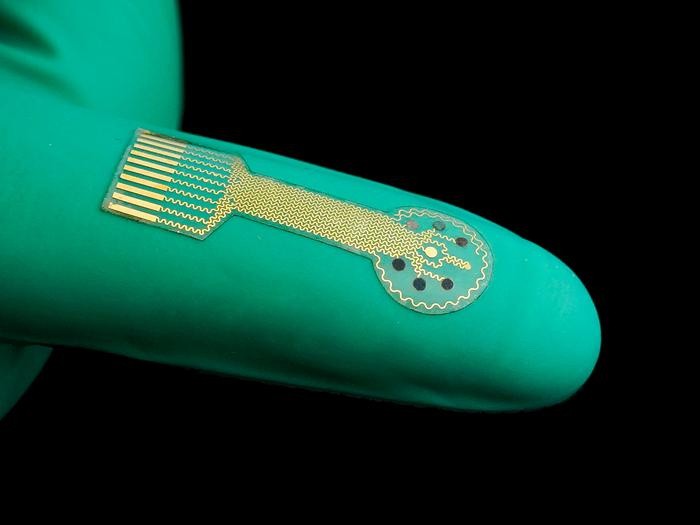In collaboration with the Keck School of Medicine of USC, researchers at Caltech have developed innovative smart bandages designed to improve the treatment of chronic wounds.
These advanced bandages promise to automatically monitor and respond to changes within wounds, providing real-time data and delivering treatments as needed. The USC-Caltech team, partly supported by the National Institutes of Health, has tested these smart bandages in animal models in a proof-of-concept study.

Creating Smart Bandages, 'Cyber Skin'
David G. Armstrong, PhD, DPM, a professor of surgery and neurological surgery at the Keck School of Medicine and co-director of the Southwestern Academic Limb Salvage Alliance (SALSA), emphasized the goal of creating a "cyber skin" to help wounds heal while monitoring and managing them.
Armstrong and his team have refined smart bandage technology by utilizing advancements in materials science, nanotechnology, and digital health.
Wei Gao, PhD, an assistant professor of medical engineering at Caltech, highlighted the development of next-generation smart bandages capable of wirelessly monitoring important metabolic and inflammatory biomarkers found within wound fluids.
The researchers noted that acute wounds typically follow a standard injury, inflammation, and healing process. On the other hand, chronic wounds present a challenge due to their complexity and unpredictable nature, posing a heightened risk of infection, delayed healing, and potential complications like amputation or sepsis.
However, the team noted that smart bandages offer a unique approach instead of traditional passive dressings by incorporating wireless technology to actively monitor conditions such as inflammation, infections, and issues with blood flow.
They can alert both patients and healthcare providers through Bluetooth while simultaneously administering necessary treatments. These advanced bandages are crafted from cutting-edge materials, including bioelectronic substances capable of delivering electrical stimulation to tissues and cells.
Next-generation bandages, equipped with various sensors, can also detect changes in the wound's microenvironment.
Read Also : Scientists Develop Human Embryo-Like Model, Mimicking Aspects of 2nd Week Human Development
Are Smart Bandages the Future?
Despite these advancements, significant obstacles remain before smart bandages can be widely adopted in medical practice. According to the team, many healthcare systems continue to rely on outdated methods for wound care, necessitating revisions to current protocols.
Securing regulatory clearance for smart bandages from the US Food and Drug Administration (FDA) presents significant complexities. The FDA provides flexibility in approving wound care products that integrate multiple therapies, such as administering antibiotics alongside electrical stimulation.
However, obtaining specialized clearance necessitates extensive preclinical and clinical data collection, an ongoing objective for the USC-Caltech research team.
"While the idea of a dressing that would help us how we need when we need it makes sense to us, it also has to make sense to our colleagues at the FDA," Armstrong said in a press release.
Armstrong and his team continue to explore new wound care approaches, including using ultrasound technology to guide gene therapy delivery, aiming to stimulate blood vessel growth in calf muscles and decrease amputation risks in patients with leg ulcers.
The findings of the research team were published in the journal Nature Materials.
Related Article : Caltech Scientists Create a 'Baby Wormhole' with Quantum Computing For the First Time

ⓒ 2025 TECHTIMES.com All rights reserved. Do not reproduce without permission.




